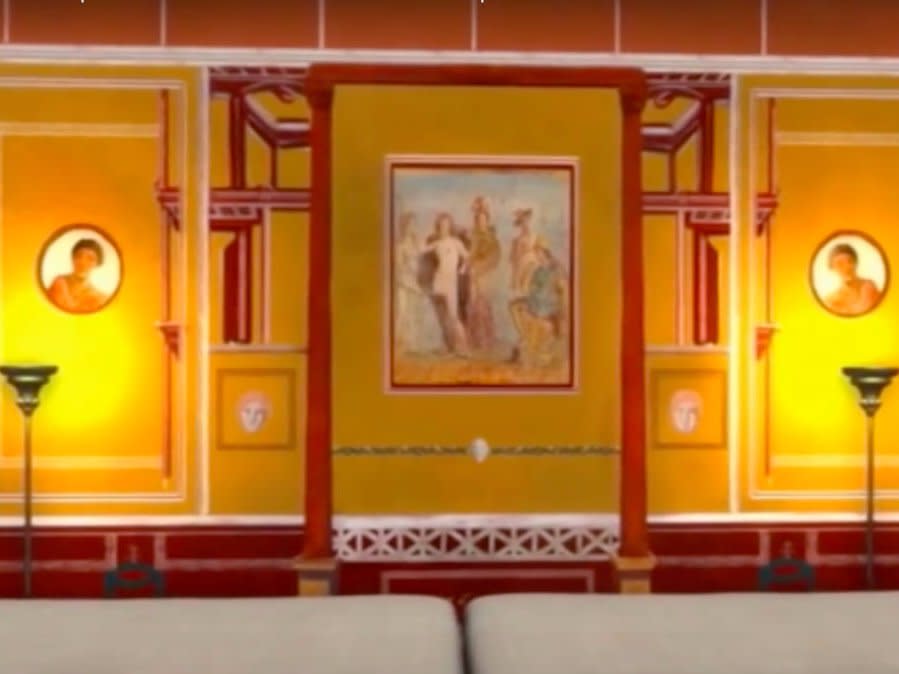See inside the incredibly ornate residence where a banker from Pompeii lived 2,000 years ago

This is what life was like for the people of Pompeii before Mount Vesuvius erupted.
Thousands of years ago, Mount Vesuvius erupted, destroying and burying the city of Pompeii in ash and stone.
Researchers from Lund University have used a new branch of advanced digital archaeology to create a 3D model of what a house in the ruined city might have looked like.
In this reconstruction, the team recreated the house of a wealthy banker called Caecilius Iucundus.
“By combining new technology with more traditional methods, we can describe Pompeii in greater detail and more accurately than was previously possible,” said Nicoló Dell’Unto, a digital archaeologist at the University.
This research was thanks to the Swedish Pompeii Project, which was launched at the Swedish Institute in Rome in 2000. It was started after a catastrophic earthquake hit Italy in 1980 to help document Pompeii before there was any further damage.
Before creating their reconstruction, researchers scanned the district of Pompeii and uncovered numerous treasures, such as floor surfaces from the year 79 AD, some still-intact windows, the remains of a laundry, a bakery and several gardens. In one garden there was even evidence that some taps to a stunning fountain had been turned on at the time the volcano erupted.
Below is a screenshot from the video of the large entrance room where the owner would probably have entertained business partners and associates. The researchers say that in the evening, the room would transform character, while house workers would clean and tidy.

The massive entrance room.
The creators of the reconstruction included a sculpture of Iucundus himself in the room, which you can see below. He was a very rich man, but even he didn’t belong to the upper most class of the town — the political elite.

The owner himself.
Below is a depiction of where the family father would work, and it would be the most beautifully decorated room in the house to mark his status.

The beautifully decorated tabularium.
In the banquet hall below, researchers think Iucundus would have received his guests in the evening. Roman banquets would be pretty exclusive and were only usually catered for fewer than 10 people.

The banquet hall is located further inside the house.
Finally, Iucundus may have have relaxed in one of the garden rooms below, with a lovely view of the outdoors.

There was also a stunning garden.
The researchers believe that there were many servants around the house, and it was probably home to a large extended family because of its size.
You can watch the full tour in this video:
NOW WATCH: Your iPhone is disgusting — here are the 3 best ways to clean it
The post See inside the incredibly ornate residence where a banker from Pompeii lived 2,000 years ago appeared first on Business Insider.

 Yahoo Finance
Yahoo Finance 
